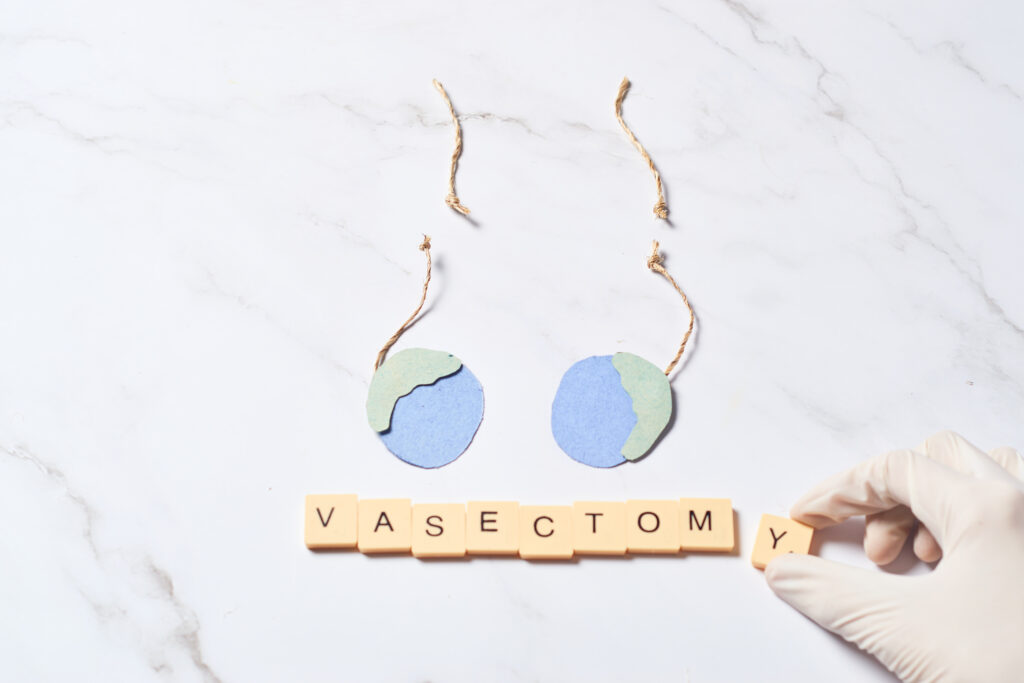
Vasectomy Reversal (Vasovasostomy)
Vasectomy is a male birth control method. This procedure and female tubal ligation techniques are considered permanent birth control methods. Vasectomy reversal connects both ends of previously ligated and cut vas deference (tubes). Since the tubes are tiny, this requires microsurgical techniques and an operating microscope or a powerful loop.
Vasectomy reversal is an outpatient procedure. Patients should expect to leave the clinic/hospital in 1-3 hours after the surgery. Generally, local anesthesia is sufficient, but patients should stay still during the microsurgical part of the operation. Therefore, general anesthesia may be needed. Sometimes, the surgery can start with local anesthesia, and if required, general anesthesia can be applied if the patient can not stay still.
The success rate of a vasectomy reversal depends on many variables. The patient’s expectation is achieving a pregnancy after a reversal surgery, not only the appearance of sperm in the ejaculate. The vasectomy can be reversed, but the couple may not achieve pregnancy eventually. Therefore, we must evaluate the vasectomy reversal candidates and their partners concerning their fertility potential as couples.
We offer one free IVF cycle with testicular sperm if the patient does not have any sperm in the ejaculate three months after the surgery.
WHO IS THE CANDIDATE FOR A REVERSAL?
Vasectomy reversal is done naturally on men who want to gain their fertility. However, patients should remember that they need time and a fertile partner to achieve a pregnancy. Therefore, before deciding on a reversal, their partner should have a thorough examination by a fertility specialist. For example, a female partner over 36 years old with a poor ovarian reserve may not be pregnant after a successful vasectomy reversal. Although some patients have sperm in their ejaculate three months after surgery, they should expect to achieve a pregnancy within one or two years. It means that female partners should have a good fertility potential at the time of the surgery and two years after surgery. If the surgery fails or no pregnancy happens in 2 years, even if the surgery is a success concerning the patency of tubes, they should still have a good chance with IVF treatment. Otherwise, IVF may be a better first-step treatment. Of course, when one chooses between a reversal or IVF/ICSI with testicular sperm, the cost of the treatment is important as well.
In summary, you should discuss the indication for vasectomy reversal with your fertility doctors very carefully.
The couple should have an excellent cumulative pregnancy chance within 1-2 years after the surgery. If delaying your IVF treatment for 1-2 years jeopardizes your pregnancy chance, you may not consider vasectomy reversal and go for direct IVF with testicular sperm.
If the couple wants to have more than one child, then having a patent vas (open tube) can give them a more economical way to have children after the vasectomy reversal. The idea is to reduce the cost per child. Of course, here, you must compare the price of IVF/ICSI with testicular sperm and the cost of reversal.
Patients with these conditions should expect a better pregnancy rate after a reversal.
• The female partner should be less than 36 years old.
• The female partner should have an examination before the reversal and have a good chance of fertility. The uterus and endometrial cavity should be normal, and the ovarian reserve should be fine.
• Male partners should have proven fertility before vasectomy or good-quality sperm at the time of surgery. It can be done with TESA (Testicular sperm aspiration). TESA can be done before surgery to evaluate the fertility potential with IVF if reversal fails.
• Although some men develop antibodies to their own sperm if a vasectomy is done eight or more years ago, we do not consider this possibility as poor fertility potential for IVF success. So, the duration of obstruction is not a criterion for eligibility for this program.
After Surgery
The surgery usually takes 1-4 hours, then 3-4 hours after surgery to recover from the anesthetics. Then, the patient may go home. If there are no complications, then patients should expect to return to their routine daily activities, including sport and sex, in 3 weeks.
Reversals are more successful during the first ten years after a vasectomy.
• In general,
• Pregnancy rates of greater than 50%.
• The highest pregnancy chance occurs within three years of the vasectomy.
If you have the reversal ten years after the vasectomy, the cumulative pregnancy chance one year after the reversal is about 30%.
Risks
Risks of vasectomy reversal include:
• Infection at the site of surgery.
• Fluid buildup in the scrotum (hydrocele) may require draining.
• Injury to the nerves in the scrotum.
COST
The cost of a reversal is 3,000.- Euros in our clinic. We offer a 50% reduction in the IVF cycle with the testicular sperm if patients do not have sperm in their ejaculate within a year..The cost of the drugs for ovulation induction is not included.
